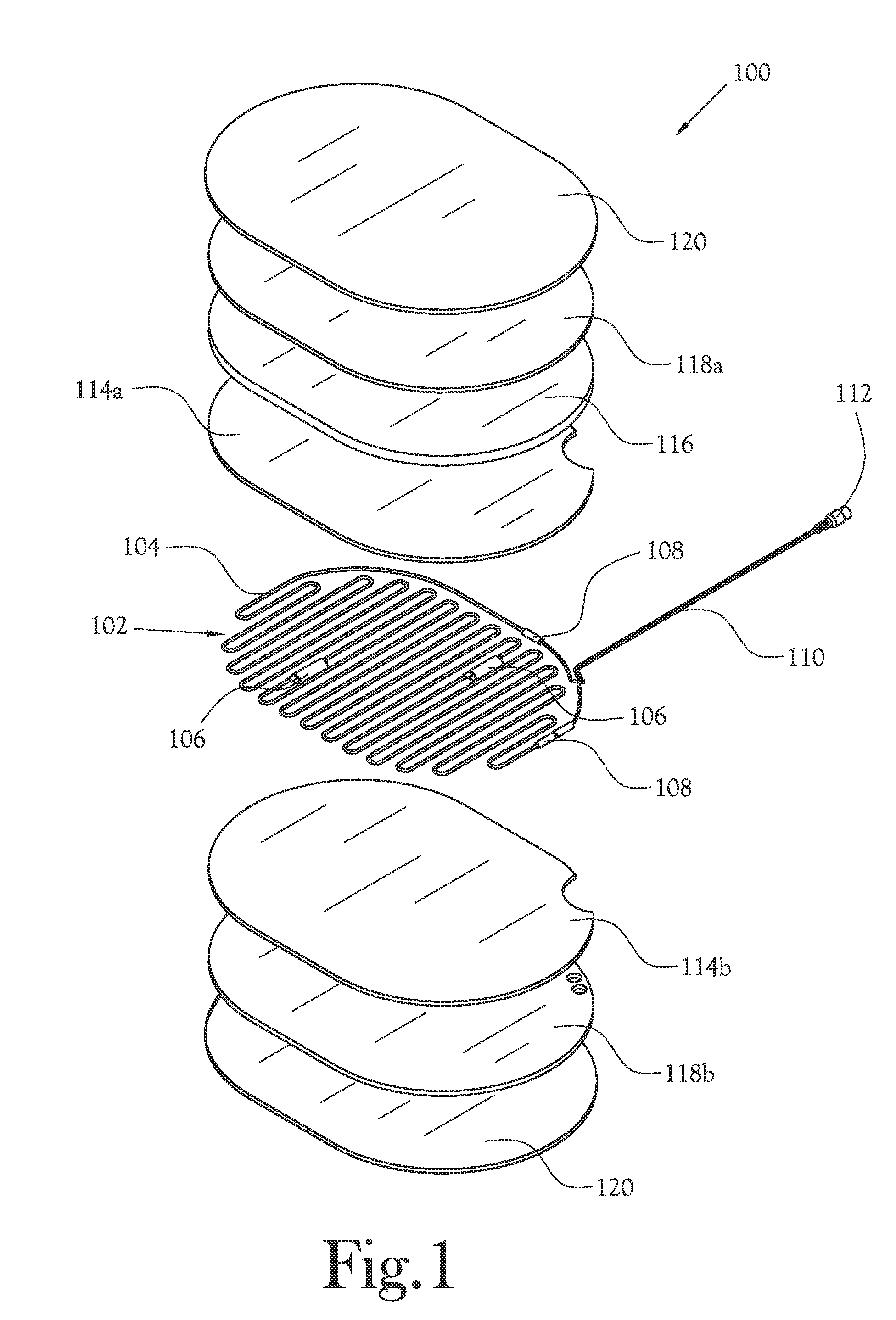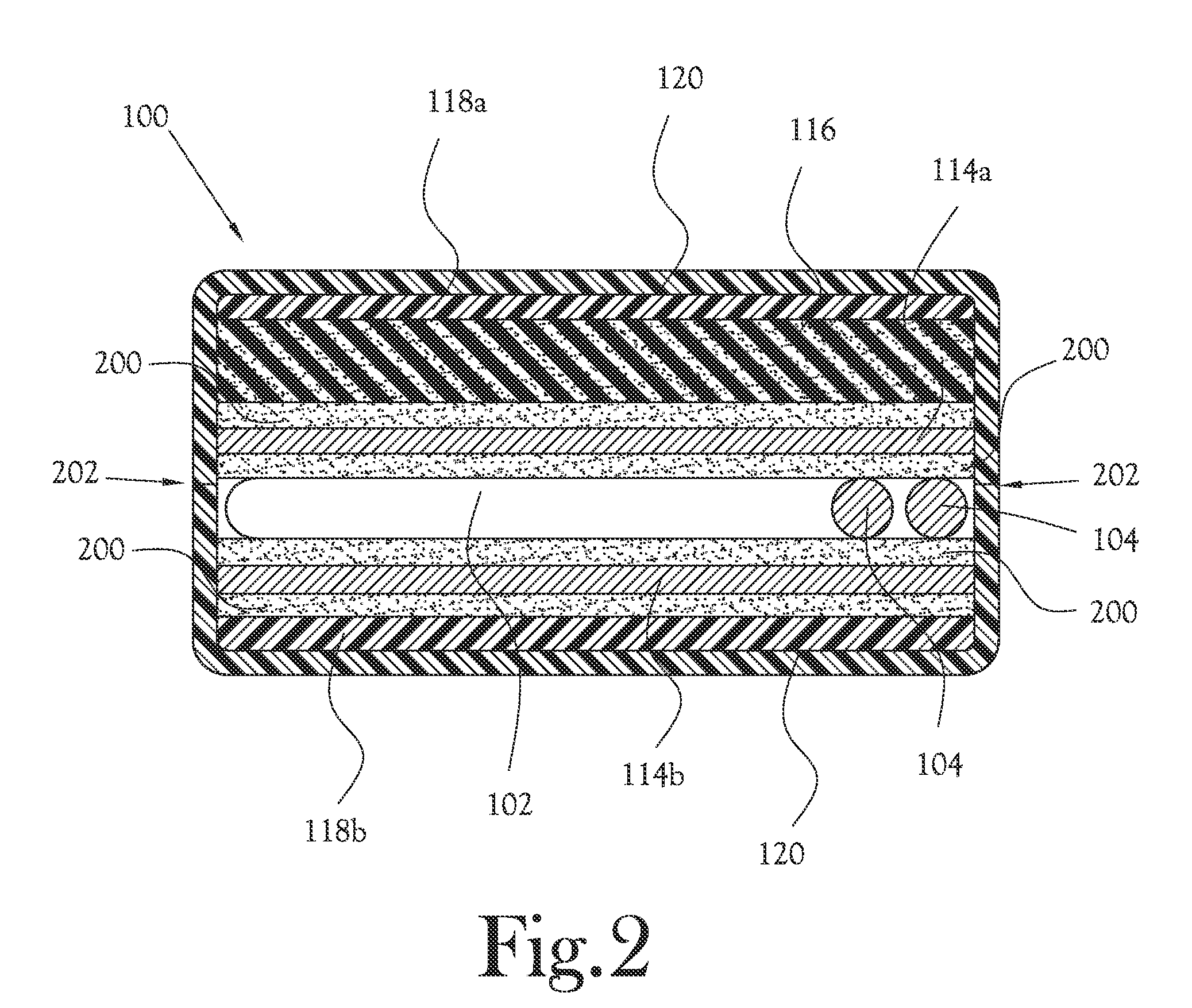Heating Pad for Use with Animals
a heating pad and animal technology, applied in the field of animal heating pads, can solve the problems of damage to the heating pad components, pet folding or bunching up the heating pad, and the heating pad can be easily rolled up, so as to prevent overheating and reduce or eliminate the problem.
- Summary
- Abstract
- Description
- Claims
- Application Information
AI Technical Summary
Benefits of technology
Problems solved by technology
Method used
Image
Examples
Embodiment Construction
[0017]A heating pad for use with animals, or pet heating pad, is shown in the figures and described herein by the reference numeral 100. The pet heating pad provides a pad with a cushioned exterior and a flexible but resilient interior that prevents overheating by maintaining or returning the pet heating pad to a flat profile. The pet heating pad heating system includes a heating element with temperature limitation controls for safe operation surrounded by layers of material selected for temperature control properties. The result is a pet heating pad that substantially reduces or eliminates the problems normally associated with heating pads such as hotspots, overheating, bunching, and folding while providing a pet with a physically and thermally comfortable surface upon which to rest.
[0018]FIG. 1 illustrates an exploded view and FIG. 2 illustrates a sectional view of one embodiment of the pet heating pad 100 showing the component layers. Generally, the pet heating pad includes a hea...
PUM
 Login to View More
Login to View More Abstract
Description
Claims
Application Information
 Login to View More
Login to View More - R&D
- Intellectual Property
- Life Sciences
- Materials
- Tech Scout
- Unparalleled Data Quality
- Higher Quality Content
- 60% Fewer Hallucinations
Browse by: Latest US Patents, China's latest patents, Technical Efficacy Thesaurus, Application Domain, Technology Topic, Popular Technical Reports.
© 2025 PatSnap. All rights reserved.Legal|Privacy policy|Modern Slavery Act Transparency Statement|Sitemap|About US| Contact US: help@patsnap.com



